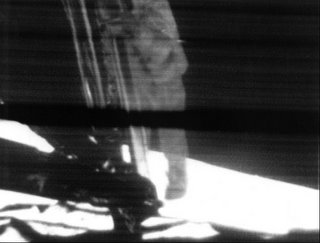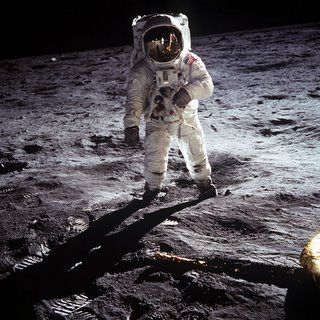"Fly Me To The Moon"
 “That’s one small step for man, one giant leap for mankind.” There were the words of Neil Armstrong as he stepped into the
“That’s one small step for man, one giant leap for mankind.” There were the words of Neil Armstrong as he stepped into the  The first lunar landing by the Apollo 11 crew on June 20th, 1969 was as much a political event as it was a scientific one. The event was broadcast on national television and was meant to establish the States’ dominance in space and to divert attention away from mounting tensions in
The first lunar landing by the Apollo 11 crew on June 20th, 1969 was as much a political event as it was a scientific one. The event was broadcast on national television and was meant to establish the States’ dominance in space and to divert attention away from mounting tensions in
Fate has ordained that the men who went to the Moon to explore in peace will stay on the Moon to rest in peace. These brave men, Neil Armstrong and Edwin Aldrin, know that there is no hope for their recovery. But they also know that there is hope for mankind in their sacrifice.
These two men are laying down their lives in mankind's most noble goal: the search for truth and understanding. They will be mourned by their families and friends; they will be mourned by their nation; they will be mourned by the people of the world; they will be mourned by a Mother Earth that dared send two of her sons into the unknown.
In their exploration, they stirred the people of the world to feel as one; in their sacrifice, they bind more tightly the brotherhood of man. In ancient days, men looked at stars and saw their heroes in the constellations. In modern times, we do much the same, but our heroes are epic men of flesh and blood.
Others will follow, and surely find their way home. Man's search will not be denied. But these men were the first, and they will remain the foremost in our hearts.
Upon the crew’s return four days later they were hailed for their bravery as heroes of a proud . Behind them the men left scientific instruments, an American flag and a plaque that reads:
First Set Foot Upon the Moon
July 1969 A.D.
We Came in Peace For All Mankind.
Sources:
http://en.wikipedia.org/wiki/Apollo_11
http://nssdc.gsfc.nasa.gov/planetary/lunar/apollo11info.html
http://www.nasm.si.edu/collections/imagery/apollo/AS11/a11.htm
http://www.hq.nasa.gov/office/pao/History/ap11ann/introduction.htm
http://www.hq.nasa.gov/office/pao/History/ap11ann/top10sci.htm
http://www.hq.nasa.gov/office/pao/History/ap11ann/legacy.htm
http://en.wikipedia.org/wiki/Space_Race

